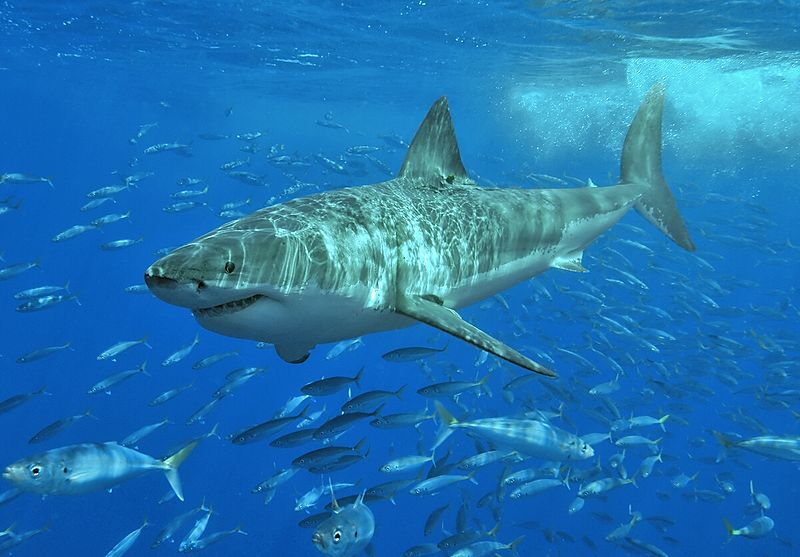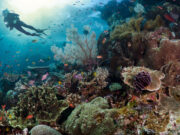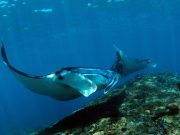It’s commonly said that sharks, especially great white sharks, Carcharodon carcharias, mistake surfers for seals when looking at them from below and thus bite them by mistake.
Researchers from Florida and Vienna, though, have found that this is not the case.
They discovered that the majority of damage to surfers and their boards is at best superficial-to-moderate in nature and does not reflect the level of damage needed to immobilise or stun a seal. Not only that, but the sharks biting surf boards tend to be smaller than those that bite seals.
Large white sharks often feed on seals. Smaller white sharks are not fast or agile enough to successfully hunt seals, and their tooth structure is also not yet suitable for gouging. Consequently, there is a minimal size where white sharks start to become more effective in hunting seals.
 Image: Terry Goss | CC BY-SA 3.0 Unported
Image: Terry Goss | CC BY-SA 3.0 UnportedSuppose that a white shark would mistake surfers for seals; the minimum size of sharks biting surfers should therefore be similar to the minimum size of those who successfully hunt and kill seals. Researchers Erich Ritter and Alexandra Quester investigated whether the smallest size of white sharks biting surfers correlated with the minimum size of white sharks attacking seals, and the general wound intensity on surfers and the damage caused to their boards matched the wound severity on seals.
When they analysed the data, it revealed that the the general wound pictures on seals didn’t match the wounds on surfers and damage to their boards.
In more than 76% of all events, the shark caused damage to a person or a board that would not have incapacitated a seal. These mostly superficial or moderate levels of damage suggest a curious animal rather than a hunting one. This is strongly supported by the 15% of incidents where neither the person nor the board was affected. It would be pointless for a white shark to successfully hunt down a seal but then just bump into it and let go.
In more than 64% of incidents, where a shark bit the surfer and its board a second time, the level of damage remained between no damage and minor damage. If the shark were mistaken in the first place and even after the first bite still under the impression of having attacked a seal, the question arises of what the purpose of a second superficial bite would be.
The existence of play behaviour has been established in white sharks and could explain why they occasionally approach surfers in a fast and overpowering manner despite the unknown nature of the object.
The working basis of the mistaken identity theory is the silhouette similarity between a seal and surfer when looked at from directly below. However, the average depth among the examined cases was only around 4m, forcing a shark to move in a shallow angle, which changes the silhouette into something completely different than what would be seen from below. In addition, the visibility under water hardly exceeded a few meters for any of the examined cases, making visual contact a very close proximity affair. Needing to get close before visual contact can be established, as well as facing something unfamiliar since a search image cannot be confirmed, will most likely lead to a rather cautious contact which is reflected by the majority of superficial-to-moderate bites, including mere bumps.
So, in answer to the question, no, sharks do not mistake surfers for seals.
Do White Shark Bites on Surfers Reflect Their Attack Strategies on Pinnipeds?,” Journal of Marine Biology, vol. 2016, Article ID 9539010, 7 pages, 2016. doi:10.1155/2016/9539010
Image credits:
- Great white shark: Terry Goss | CC BY-SA 3.0 Unported

















